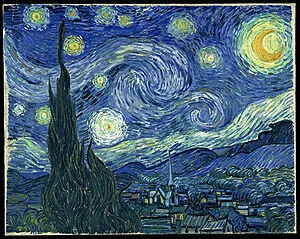Step back to see what you are creating
When I was a young boy I took a drawing class at the Art Institute of Chicago. I was exposed to some of the greatest pieces of modern art in the world. One of my favorite paintings, "Sunday Afternoon on the Island of Le Grande Jatte," was painted by Georges-Pierre Seurat.
Seurat was a leader of the 19th Century painting school called Pointillism. According to Wikipedia, Pointillism involves the "graphic phenomenon of depicted imagery emerging from disparate points....The technique relies on the perceptive ability of the eye and mind of the viewer to mix the color spots into a fuller range of tones."
I loved viewing Seurat's painting as close up as allowed, because then all the little dots of paint color that Seurat painstakingly applied to the canvas were so evident and the grand scheme was not. Only by drawing back did the bits merge and shapes and subtle colors emerge. The granularity of the close-up became the wonderful park scene of the greater distance.
Many years later I had the opportunity to have the run of the Museum of Modern Art in New York City at a private reception. I camped in front of Vincent Van Gogh's "The Starry Night" for what seemed an hour and gazed lovingly at the wonderful explosion of color.
While Van Gogh's night sky abstraction is contemporary with Seurat's park scene, Van Gogh's work consists of great swathes of color, not little dots. Yet, I was fascinated to see that the effect was the same. A close-up view showed color bands and brush strokes. Only by drawing back did the wonderful night scene emerge.
What does an art-lover's exposition on 19th Century painting techniques have to do with strategic thinking, you ask? The point is simple but fundamental. We live and operate in on the ground, just as the painter functions on the canvas. Our work is in front of our nose - it must be, lest we get nothing done. But executing task after task is only meaningful if it adds up to something grander. It's important to continually step back and look at the direction of our work, the sum of our tasks and steps, what the dots and swathes of minute-by-minute and day-by-day life are adding up to.
A grand scheme usually emerges by plan, not by random actions. Whether painstakingly created dot-by-dot or dramatically unfolded colorful stroke by stroke, the work of the great painters makes it clear: Planned, unfolding, moment-by-moment action can create something great.


